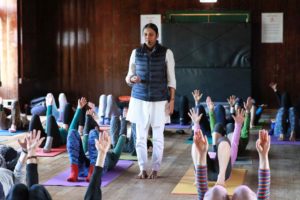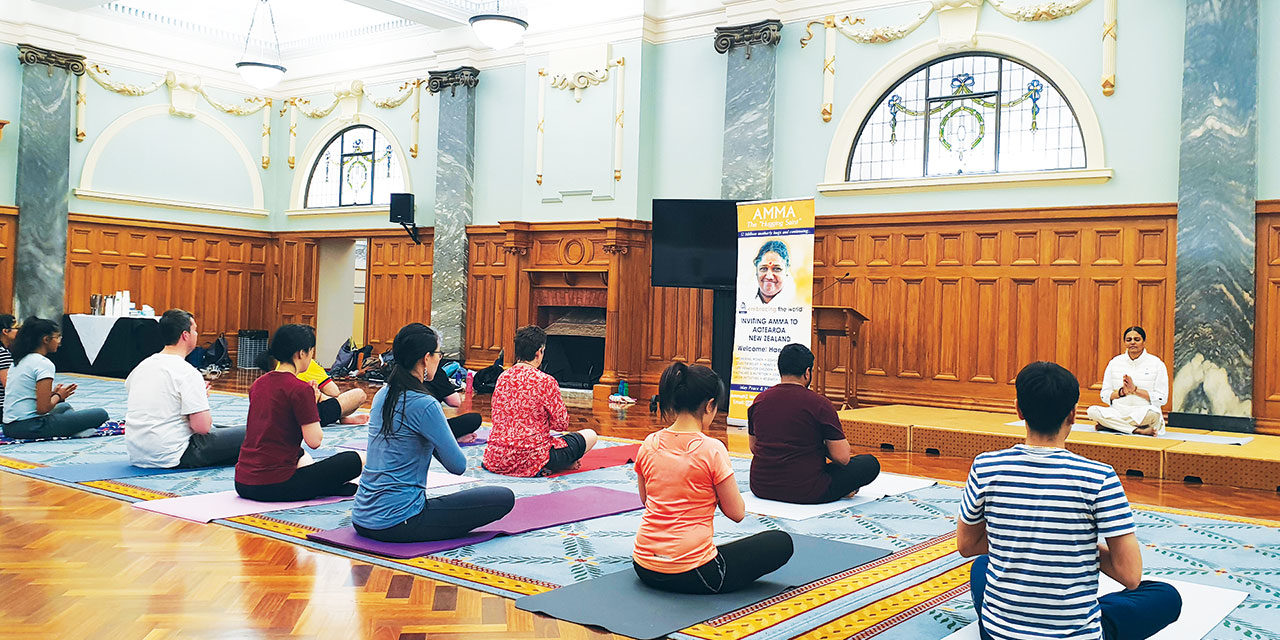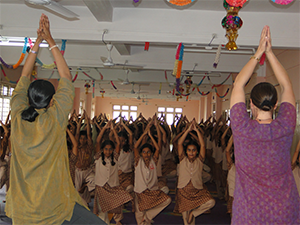 Retreat is a crucial part of yogic life. Seekers striving to free their minds recognize the importance of taking time away from worldly life, temporarily or permanently, in order to concentrate more fully on meditative practices. With the numerous responsibilities of life, especially in a fast-paced digital era, there is still no better way for devoted practitioners to encourage spiritual unfolding than to relinquish busy schedules and practical concerns by going on retreat.
Retreat is a crucial part of yogic life. Seekers striving to free their minds recognize the importance of taking time away from worldly life, temporarily or permanently, in order to concentrate more fully on meditative practices. With the numerous responsibilities of life, especially in a fast-paced digital era, there is still no better way for devoted practitioners to encourage spiritual unfolding than to relinquish busy schedules and practical concerns by going on retreat.
Whether we go for four days or three months, these periods of uninterrupted practice and quiet reflection allow us to melt away the distraction of compulsive busyness. On retreat, we give ourselves and everyone else the gift of removing the mind’s obsessions and revealing what sages call our undistracted and compassionate true nature—our essence.
A gifted few, with an abundance of spiritual karma from past lives, realize enlightenment with a minimum of practice and exposure to the teachings. Most masters recommend and advise seekers to repeatedly go on retreat to strengthen their understanding and to rest in the spaciousness of uninterrupted practice. Milarepa’s dire karmic labors at the behest of his Master underscore this message: one way or another, you will have to practice; and it will not be in vain.
When we go on retreats and face ourselves in silence, it allows us to see our fears and attachments more clearly, to embrace them with compassion, and to grow in intuition and trust in our true nature.
Going on retreats gives us the opportunity to pay attention to three essential aspects of spiritual practice:
- We learn to revisit the tools of awareness taught within a particular tradition. These are the specifics of asana, pranayama, and meditation appropriate for our level of understanding and application. On retreat, we also have the opportunity to hear the philosophical teachings that underlie these practices. In a traditional 2-hour class or workshop, there is not the time to delve into these areas in depth.
- Retreats give us an opportunity to reflect on these ideas and practices. This contemplation often sparks an uncompromising, unsentimental and yet more truly compassionate view of ourselves and of our lives. This view is often a necessary precursor to change.
- Retreats strengthen and deepen our practice. In the absence of the tasks and distractions of our everyday lives, retreats encourage us not only to practice more, accelerating our understanding and unfolding, but also to train the lens of mindfulness ever more deeply into infinity.
Once we access these deeper levels of awareness, we are more likely to recover ourselves and interrupt the habits of distraction when we return home. Instead of feeling irritated and restless waiting in a long line, for instance, we may find ourselves more apt to turn inward with meditative awareness, appreciating the unhurried moments. By going on retreat, we have an opportunity to practice living in a way that engenders clarity and compassion—the inner abodes of the awakened.
Retreats offer a more detached theatre in which to witness the misidentified ego-self demanding center stage. Sages refer to the changeless substratum of our being as the true Self that is naturally full of bliss and love. Repeated adjustments to the fine tuned inner alignment result in a quiet, undistracted and sustained surrender to the peace that passes all understanding.

From childhood, we have learned to identify with the world, to find our sense of worth in the praise and blame heaped upon us by parents, teachers, friends or mates. We have been tied to the back of a chariot and dragged through a marketplace of cheap mirrors and distorted reflections.
 How do we allow our inner wisdom to become unveiled? When we commit to an awareness-discipline that places strong emphasis on watching the mind, such as Amrita Yoga or the Integrated Amrita Meditation technique, we have said farewell to some of our worst infatuations. We now go to teachers and learn new tools for working with body, breath, mind and heart. Gradually, as the need to deepen our practice gets more urgent, we find ourselves surfacing from repeated dives to a newly flooded landscape—where now to dive when nothing remains but grace?
How do we allow our inner wisdom to become unveiled? When we commit to an awareness-discipline that places strong emphasis on watching the mind, such as Amrita Yoga or the Integrated Amrita Meditation technique, we have said farewell to some of our worst infatuations. We now go to teachers and learn new tools for working with body, breath, mind and heart. Gradually, as the need to deepen our practice gets more urgent, we find ourselves surfacing from repeated dives to a newly flooded landscape—where now to dive when nothing remains but grace?
Retreats allow us to see how illusory and impermanent our identities are, how we make and remake ourselves in each moment. Seeing this lack of cohesion can be a little unsettling at first; then it gets interesting; and then it is far too late to save yourself from a life-changing liberation.
As our minds loosen their obsessions with our practical affairs and everyday identities, we can open to glimpses of the inner peace that underlies our restlessness and discontent. And when the retreat is led well, we are guided further into this inner quiet. A real master gives us pointers about the roadblocks that inevitably surface and about how to navigate them. When the ramblings of the mind rest in abeyance, we are allowed to peer into our unconditioned true nature. However imperfect the glimpse may be, we will never be the same again. We now know that, however often it is shrouded, within us lies an oasis of ease and joy. We can find our way back to the wellspring. Retreats offer a safe vehicle that protects us from distraction on the inner journey.
A student once shared this experience with me after her 4-Day Beginners Foundation Amrita Yoga Sadhana Retreat at Amritapuri. In her words:
I suddenly felt a strong wave of emotion. I had to ask Amma a burning question. Didn’t she too ever feel that she was deeply missing someone? Her reply went straight to my heart: “Have you ever noticed that you still feel this yearning sometimes in their very presence?” she asked. When I nodded, she continued, “In reality, it is not a particular person you are missing so much. You are missing you! You are missing being at home inside yourself, and you are displacing the feeling, blaming it on the absence of your family.”
I was deeply touched by her story. This disconnected feeling remains with us, whomever we are with and wherever we go, until we are finally willing to stop chasing temporary circumstantial happiness. Once you touch your own inner reservoir of joy and contentment and learn to rest there, it won’t matter so much where you go or who you are with. When the voices of discontentment surface, we don’t have to emotionally identify with them; they can sink as easily as they arose. Only then will we experience true happiness. Of course, we will always have people we are naturally close to, but attachment to their presence does not have to be an insane directive from a mad dictator. When we are apart, we carry them with us in our heart; when we are together, we adore them as manifestations of God.
Retreats are a beautiful blessing as they help us to find glimpses of an incredible resource, our true Self. Through the hours of practice in pure vibrations, we can come to witness our internal warring voices from a place of impartial interest, eventually realizing that no one can expel the discontented false self except us. Instead of identifying ourselves as bad or wrong, we learn to dis-identify from the charade of the ego-self. We begin the slow, gradual process of compassionately metabolizing these patterns into our larger nature, our authentic Self.
We need compassionate masters like Amma, yet they cannot do the work for us. Only the dedicated use of the tools of practice, again and again, gradually transforms us.
The scriptures refer to three transcendent blessings in our lives: darshan (meeting), sparshan (touch), and sambashan (conversation). The scriptures also note three conditions to attain Kaivalya (liberation): to have a human birth, to yearn for moksha (infinite permanent peace), and to come in contact with a living Master.




